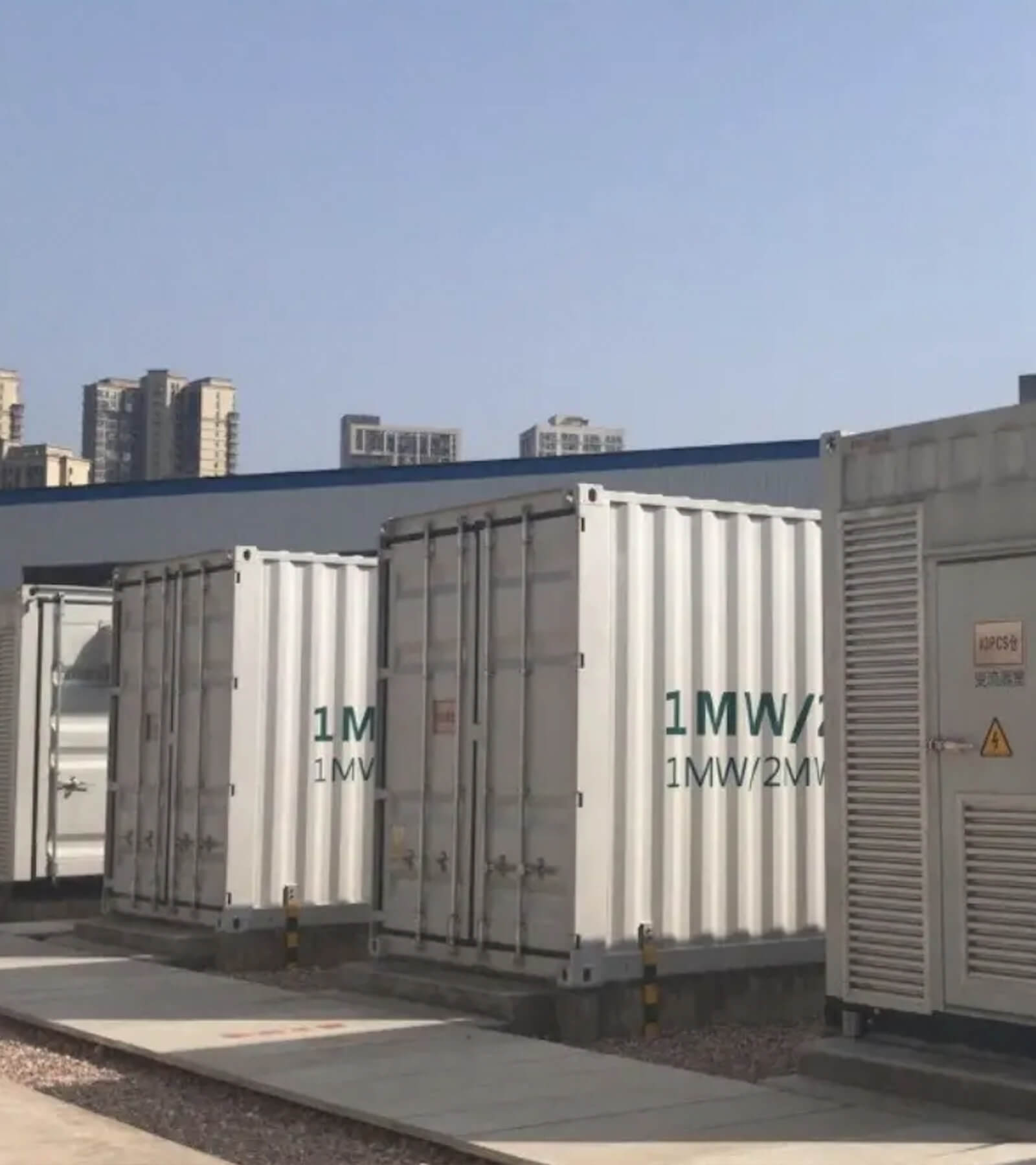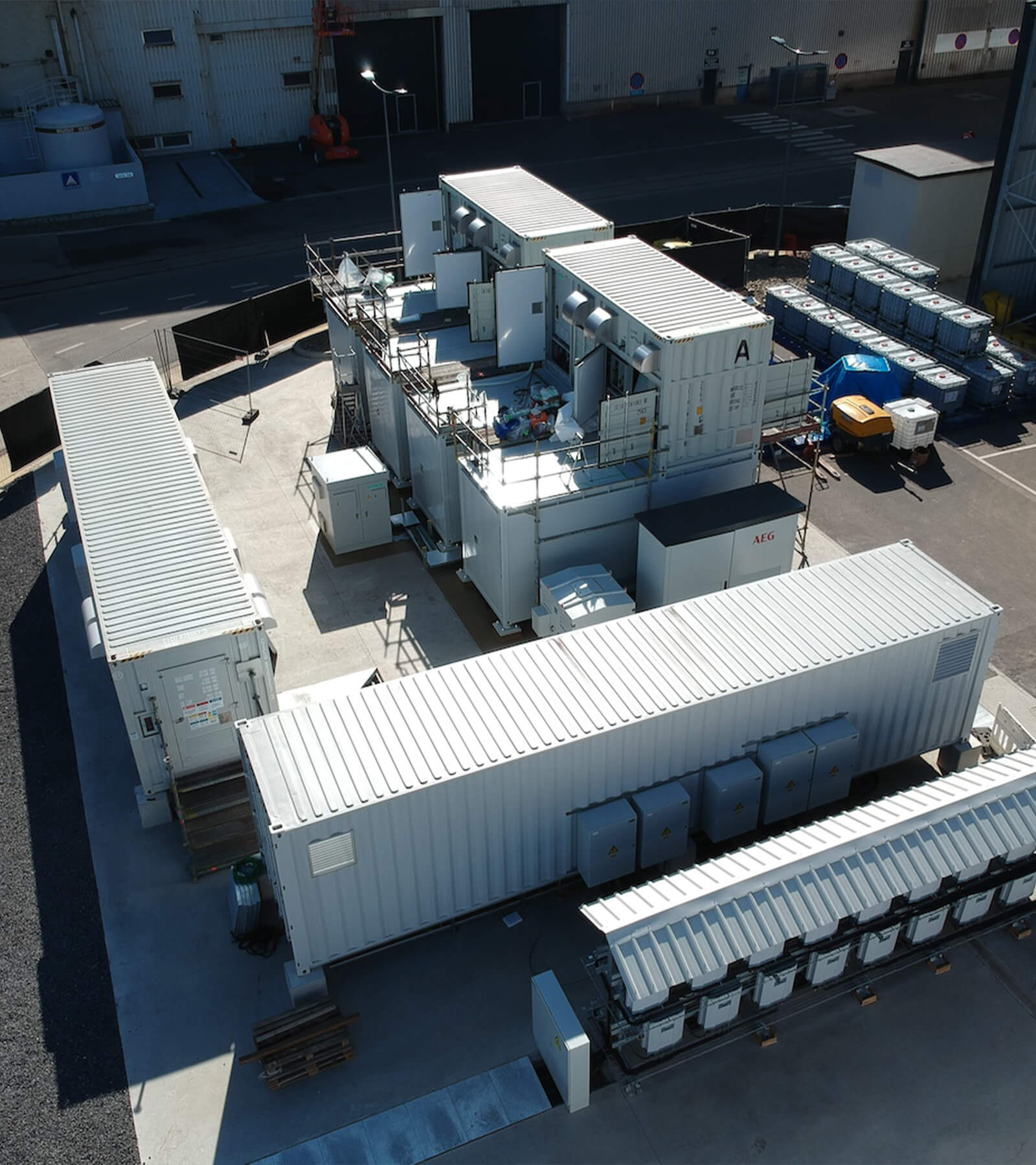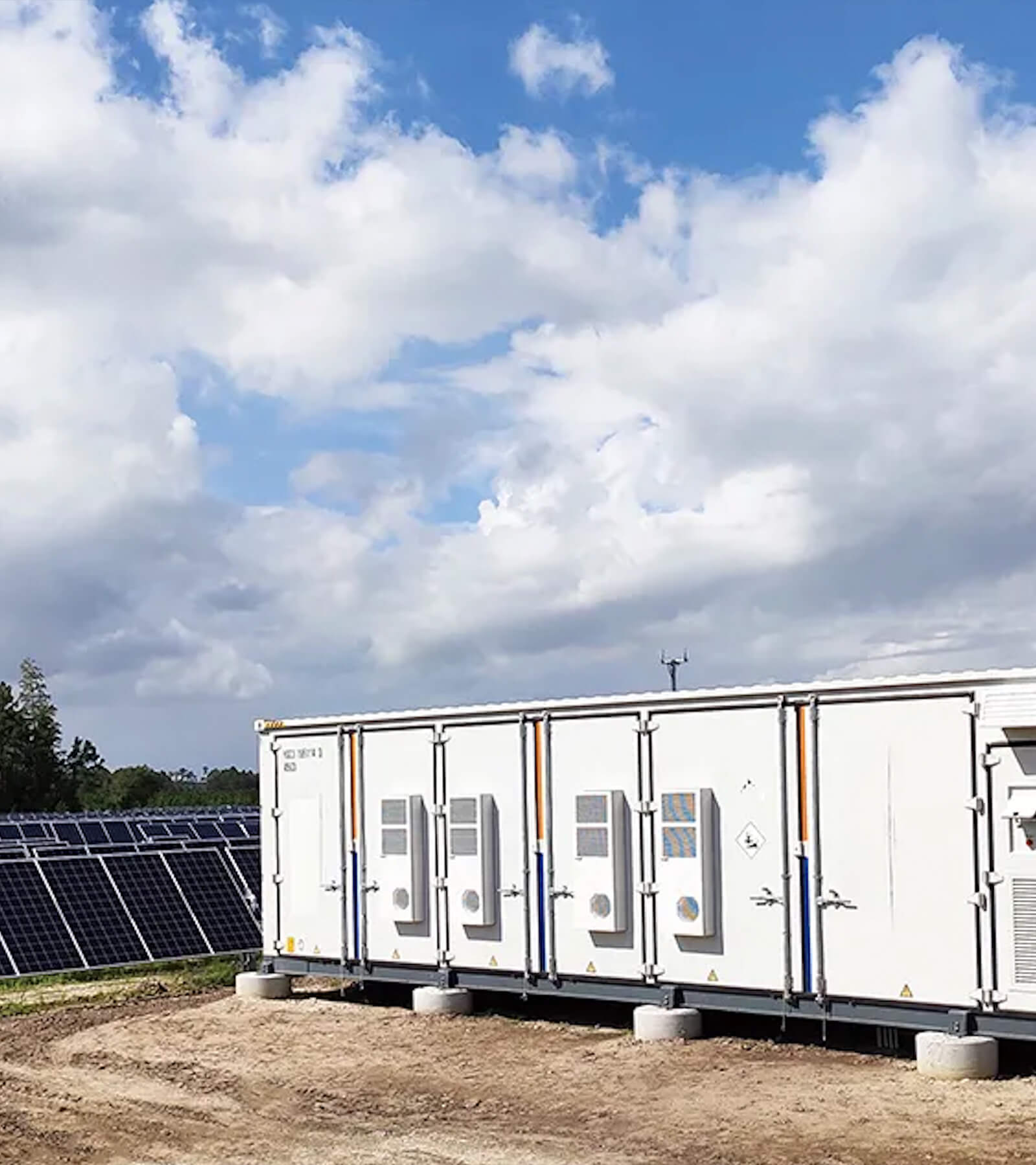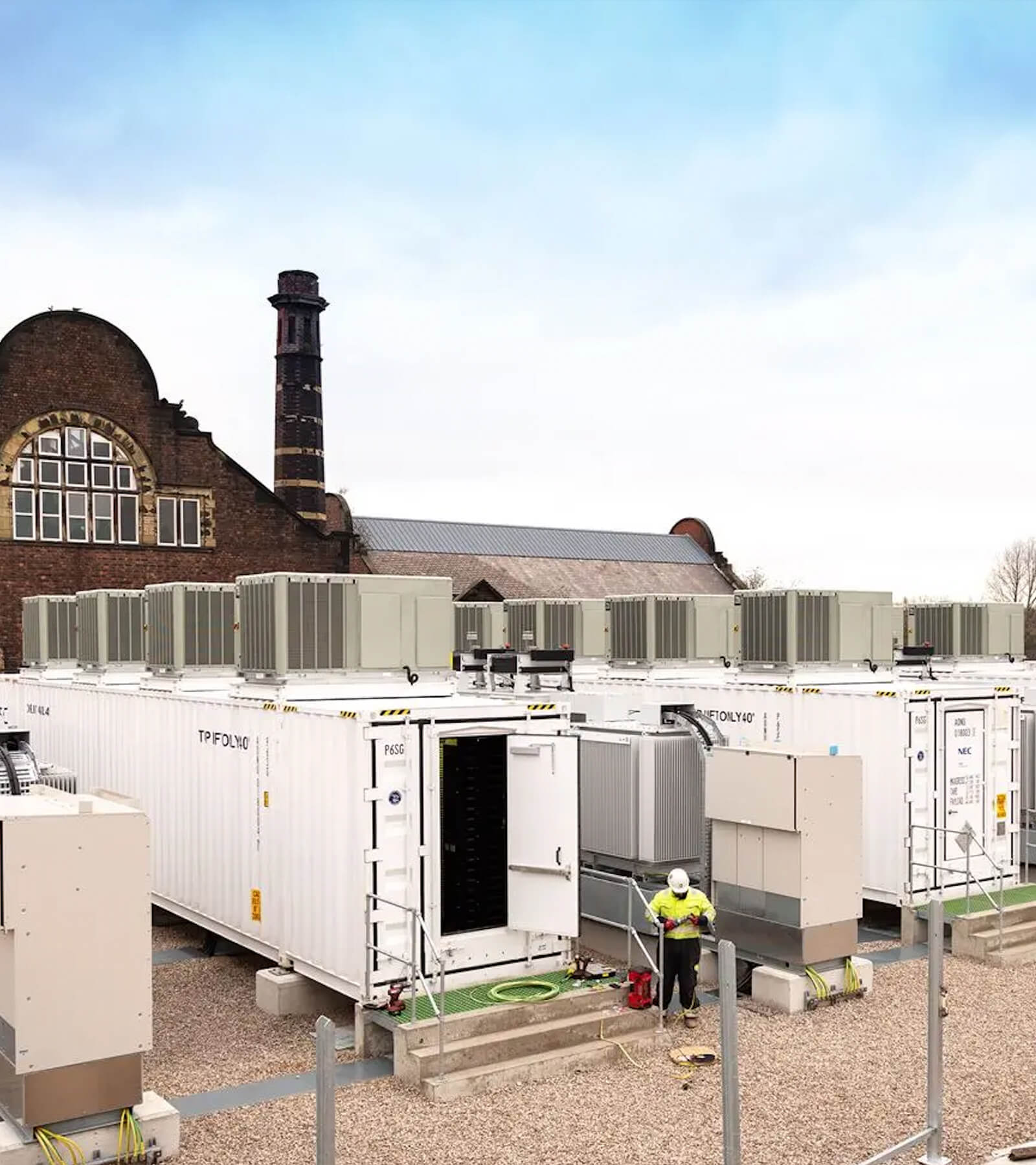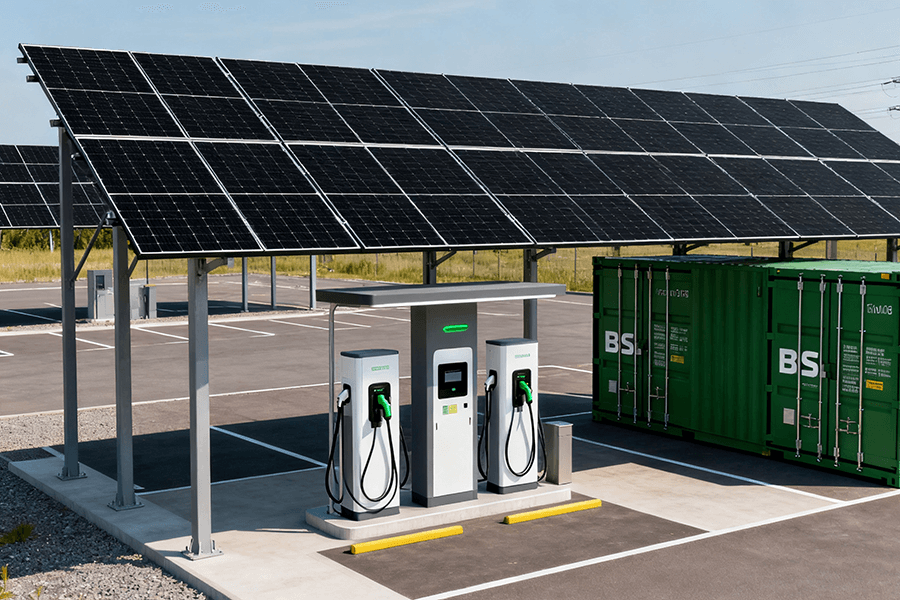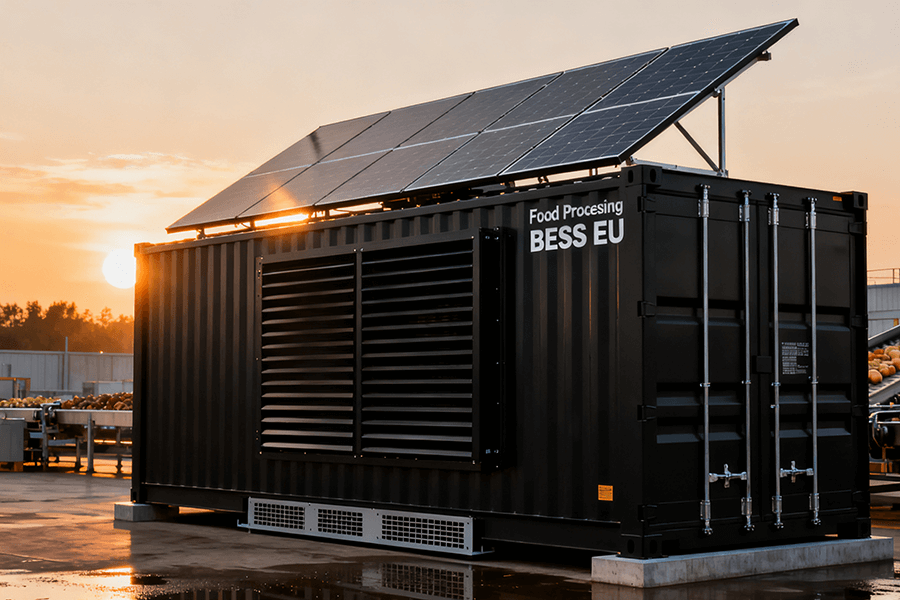
The EU’s 2030 Renewable Sprint & the “Unpredictable Toddler” Dilemma
The EU’s Renewable Energy Directive (RED III) isn’t just a policy—it’s a strategic blueprint charting a course toward a transformative energy future. At its core lies an ambitious target: achieving a 42% renewable energy mix by 2030. This objective is no small feat, akin to orchestrating a complex symphony while navigating a turbulent storm.
Wind and solar energy stand as the twin pillars of this renewable revolution. Their potential is undeniable, yet they present unique challenges. Wind turbines, despite their towering presence, fall victim to the whims of nature. When energy demand peaks, the wind may falter, leaving the grid in a precarious position. Solar panels, too, have their limitations. As the sun sets, so does their production, creating a daily lull in energy generation.
Enter BESS Containers (Battery Energy Storage Systems), the unsung heroes of the renewable energy landscape. These advanced storage solutions act as stabilizing forces, transforming the intermittent nature of wind and solar into a reliable power source. According to the International Renewable Energy Agency (IRENA), the integration of BESS can significantly reduce renewable curtailment (wasted energy). In fact, it has the potential to slash curtailment by a staggering 40%.
To put this in perspective, consider the following: for every 10 MWh of renewable energy generated, 4 MWh would typically go to waste due to grid constraints. With BESS Containers in place, this wasted energy can be stored and utilized when needed most, eliminating the paradoxical scenario of having an abundance of clean energy that goes unused. This not only maximizes the efficiency of renewable resources but also brings the EU one step closer to achieving its 2030 RED III targets.
Grid-Smoothing: How BESS Tames Wind-Solar Volatility
Wind and solar energy, while abundant and sustainable, present a unique challenge: their intermittent nature often results in unpredictable energy surges and dips. Enter BESS (Battery Energy Storage System) Containers, the linchpin in the modern renewable energy ecosystem. These high-tech containers function as sophisticated stabilizers, adeptly managing the ebb and flow of power to maintain grid stability, much like a skilled surfer navigating through turbulent waves.
Real-World Power Pairing: 10 MWh BESS + 50 MW Wind + 30 MW Solar
To truly appreciate the practical functionality of BESS Containers, let’s examine a typical hybrid renewable energy project in the European Union. This case study highlights the symbiotic relationship between wind, solar, and energy storage systems, showcasing how they work in tandem to deliver a reliable and efficient energy supply.
| Component | Capacity | Operational Characteristics |
|---|---|---|
| Wind Farm | 50 MW | Electricity generation occurs when wind speeds fall within the range of 3–25 m/s. Optimal conditions typically involve gentle to brisk winds, avoiding extreme hurricane-force scenarios. However, wind speeds can fluctuate rapidly, causing significant variations in power output. For instance, during a sudden gust, the output may spike from 50 MW to 70 MW, exceeding the grid’s immediate capacity. |
| Solar Farm | 30 MW | Peak production occurs during midday hours when sunlight is most intense. But solar energy production is highly dependent on weather and time of day. In winter months, output drops significantly, reaching near-zero levels by 7 PM. Cloud cover, seasonal changes, and geographical location further impact the consistency of solar power generation, underscoring the need for effective energy storage solutions. |
| BESS Container | 10 MWh | As the unsung hero of the energy system, the BESS Container plays a pivotal role in balancing supply and demand. When the wind farm experiences a sudden power spike, the BESS steps in to absorb the surplus 20 MW of energy, storing it for later use. Conversely, during periods of low solar or wind production—such as at night or during calm weather—the BESS releases stored energy, ensuring a consistent total output of 50 MW. This seamless operation not only prevents blackouts but also minimizes energy waste, optimizing the overall efficiency of the renewable energy system. |
These aren’t just theoretical concepts; they’re demonstrated in numerous real-world applications across the EU.
Germany’s Hornsea 2 Wind Farm, one of the world’s largest offshore wind farms, employs 15 MWh BESS units to regulate and smooth out power output. By storing excess energy during peak production and releasing it during lulls, the BESS ensures a stable and reliable power supply to the grid, even in the face of unpredictable wind conditions.
Similarly, Spain’s La Florida Solar Plant pairs a 20 MW solar installation with a 5 MWh BESS. This combination allows the plant to store surplus energy generated during sunny periods and use it when solar production is low, effectively preventing energy curtailment and maximizing the utilization of renewable resources.
EU Grid Code Compliance: No “Rule-Breakers” Allowed
The European Union enforces stringent regulations to maintain the integrity and stability of its energy systems. Grid codes, which outline the technical requirements for connecting energy systems to the grid, are not optional—they are mandatory for all energy producers and storage providers. Here are some key examples of EU grid code requirements and how BESS Containers meet these standards:
Germany’s VDE-AR-N 4105 Standard
- Frequency Regulation: This standard demands that BESS systems respond to fluctuations in grid frequency, which typically operates at 50 Hz, in less than 200 milliseconds—a response time far quicker than the blink of an eye. When the grid frequency drops to 49.8 Hz (indicating a power shortage), the BESS must immediately inject power into the grid. Conversely, if the frequency surges to 50.2 Hz (signaling an excess of power), the BESS must absorb the surplus to restore balance. BESS Containers are engineered with advanced control systems that enable them to meet these stringent frequency regulation requirements, ensuring grid stability even under varying load conditions.
France’s RTE Grid Code
- Voltage Support: For rural wind-solar projects, the RTE Grid Code requires BESS systems to provide essential “voltage support.” This is particularly important in small towns and remote areas, where power outages can have a significant impact on local communities. By regulating voltage levels, BESS Containers help safeguard these areas from power disruptions, ensuring a reliable energy supply even during adverse weather conditions, such as storms, that may disrupt wind energy production.
In addition to these specific requirements, BESS Containers are designed to comply with a wide range of other EU grid codes, including those related to power quality, grid connection, and system protection. This comprehensive compliance makes BESS Containers a reliable and efficient solution for integrating renewable energy sources into the power grid, helping the EU meet its ambitious 2030 renewable energy targets.
The Double Win: Revenue Stacking & Carbon Savings
BESS isn’t just good for the planet—it’s good for your wallet. Let’s break down the two biggest perks, exploring how these benefits translate into tangible advantages for EU project owners and contribute to a sustainable energy future.
Revenue Stacking: Make Money While You Sleep
BESS Containers are not mere energy storage units; they are dynamic income generators. Here’s a detailed breakdown of how EU project owners can maximize their earnings through multiple revenue streams:
| Revenue Stream | How It Works | EU Average Earnings | Source Link |
|---|---|---|---|
| Energy Arbitrage | Capitalize on fluctuating electricity prices. During periods of low demand, such as 2 AM when wind energy production often exceeds consumption, purchase electricity at a discounted rate. Then, sell it during peak demand hours, like 7 PM, when prices are significantly higher. | €40–€60 per MWh | BloombergNEF |
| Secondary Control Reserves | Provide essential grid support by selling fast-response power to grid operators. When the grid experiences frequency dips or other stability issues, BESS can quickly inject power, ensuring grid reliability. | €80–€120 per MWh/year | ENTSO-E |
| Curtailment Avoidance | In many EU countries, including Spain and Germany, there are penalties for wasting renewable energy when production exceeds grid capacity. BESS helps avoid these fines by storing excess energy for later use. | €30–€50 per MWh saved | IRENA |
Example: Consider a 10 MWh BESS deployed in Germany. By leveraging the above revenue streams, it could generate €150,000–€250,000 per year. This substantial income can cover 15–25% of the project’s upfront cost, making BESS an attractive investment for energy project owners.
Carbon Savings: 35% Less Emissions (Yes, Really)
While wind and solar energy are inherently clean sources, unbalanced renewable systems often require gas-fired backup plants to maintain grid stability. This reliance on fossil fuels undermines the environmental benefits of renewables. BESS, however, offers a solution by enabling seamless integration of intermittent renewable energy sources.
According to the European Environment Agency (EEA), the environmental impact of different renewable energy projects varies significantly:
- A wind-only 50 MW project emits approximately 12 tons of CO₂ per GWh. This emissions figure accounts for the gas backups needed to stabilize the grid when wind energy production fluctuates.
- A solar-only 30 MW project generates around 18 tons of CO₂ per GWh. Similar to wind projects, the reliance on gas backup power during periods of low solar irradiance contributes to these emissions.
- In contrast, a hybrid project consisting of 50 MW of wind power, 30 MW of solar power, and a 10 MWh BESS emits just 9 tons of CO₂ per GWh. This represents a 35% reduction in lifecycle emissions compared to single-source renewable projects.
Over a 20-year lifespan, a single hybrid project can avoid approximately 1,800 tons of CO₂ emissions. To put this in perspective, this is equivalent to taking 400 cars off the road for the same duration. The environmental benefits of BESS-integrated hybrid projects are not only significant but also essential for the EU to meet its ambitious climate targets.
Conclusion: Sizing Your Project & Grabbing EU Funding
Ready to build a wind-solar-BESS project? Here’s what you need to know:
The “1:8” Sizing Rule: No Guesswork Needed
Forget complicated equations—EU developers rely on a tried-and-true rule of thumb for streamlining the sizing process of hybrid renewable energy projects.
1 MWh of BESS Capacity = 8 MW of Combined Wind-Solar Capacity
This ratio isn’t arbitrary; it’s grounded in empirical data. On average, an 8 MW wind-solar combination generates 1–1.2 MWh of surplus energy per hour during peak production periods. A 1 MWh BESS is perfectly calibrated to capture this excess, ensuring minimal energy waste and optimal grid integration.
| Combined Wind-Solar Capacity | Recommended BESS Capacity | Wind & Solar Breakdown Example |
|---|---|---|
| 40 MW | 5 MWh | 25 MW Wind + 15 MW Solar |
| 80 MW | 10 MWh | 50 MW Wind + 30 MW Solar |
| 160 MW | 20 MWh | 100 MW Wind + 60 MW Solar |
This rule simplifies the initial planning phase, but for projects with unique geographical or climatic conditions, consulting with energy engineers is advisable to fine-tune specifications.
Horizon Europe Funding: Free Cash for Hybrid Projects
The EU’s Horizon Europe program, boasting a substantial €95.5 billion budget spanning 2021–2027, presents a golden opportunity for wind-solar-BESS initiatives. To secure funding, projects must meet stringent criteria:
- Innovation Focus:
Prioritization is given to endeavors that drive technological advancements, such as:
-
- Extending battery lifespan through novel chemistries
-
- Reducing costs via recycled battery materials
-
- Enhancing BESS efficiency in extreme environmental conditions
- Consortium Building:
Collaboration is key. Forge partnerships with reputable EU-based entities:
-
- Research institutions like Germany’s Fraunhofer Institute, renowned for cutting-edge energy R&D
-
- Established energy companies such as E.ON, which bring operational expertise
- RED III Alignment:
Demonstrate a clear link to the EU’s Renewable Energy Directive III (RED III) goals. Projects should explicitly articulate how they contribute to member states achieving the 42% renewable energy target by 2030. For example: “Our 100 MW hybrid project will supply 100% renewable electricity to 50,000 households, displacing X metric tons of CO₂ annually.”
Applications are submitted through the Horizon Europe Portal. Mark your calendars—key deadlines for 2025 project cycles fall in March and September. Prepare a comprehensive proposal package, including technical blueprints, financial projections, and consortium partnership agreements, to maximize your chances of success.
Maxbo Solar: Your EU Hybrid Project Partner (That’s Us!)
At Maxbo Solar (www.maxbo-solar.com), we’re not just solar panel sellers—we’re hybrid project matchmakers. Here’s how we help EU developers hit their 2030 goals:
- High-Efficiency Solar Panels: Our Maxbo X-Series panels have a 23.5% efficiency rating (that’s 3–5% higher than average), so they generate more power on cloudy EU days. Pair them with BESS, and you’ll cut curtailment even further.
- Turnkey Hybrid Design: We don’t just sell parts—we design the entire system. Want a 60 MW wind-solar-BESS project in Poland? We’ll calculate the BESS size (7.5 MWh, per the 1:8 rule), source EU-compliant components, and even help you apply for Horizon Europe funding.
- 24/7 Maintenance: BESS needs love too. Our team of EU-based technicians monitors your system remotely and fixes issues in 48 hours or less—no waiting for parts from Asia.
Last year, we helped a client in Portugal build a 32 MW wind-solar-BESS project that’s now earning €120,000/year in revenue stacking and avoiding 90 tons of CO₂ annually. Want to be next? Visit www.maxbo-solar.com or email our team at [email protected]—we speak fluent “EU renewable jargon” (and coffee).
P.S. Remember: The EU’s 42% target isn’t a suggestion—it’s a deadline. BESS Containers aren’t just “nice to have”—they’re the reason you’ll cross the finish line.

